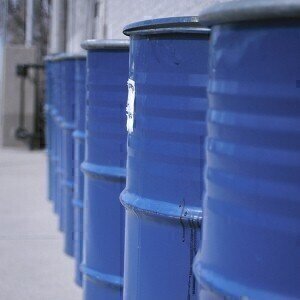Fuel for thought
What Is the Gorgon Project?
Jun 04 2016
Aptly nicknamed the ‘Lucky Country,’ Australia is home to some of the most lucrative natural resource regions on the planet. The Greater Gorgon gas fields are one of the country’s most coveted expanses, located around West Australia’s Barrow Island. With a major natural gas project now underway, the fields are on-track to become Australia's fourth LNG export development.
An island of reserves
On a broad scale, the term ‘Greater Gorgon’ describes a group of gas fields located throughout the wider region. These include Gorgon itself, as well as Chandon, Geryon, Orthrus, Maenad, Eurytion, Urania, Chrysaor, Dionysus, Jansz/Io and West Tryal Rocks.
All sit off the west coast of Australia, with the Gorgon field located around 130 kilometres out to sea. This is a relatively shallow field at just 200 metres, however some of its counterparts lie as deep as 1,300 metres. Together, the pair have an estimated natural gas count of around 35.3 trillion cubic feet.
Gorgon production hits top gear
Over the past 35 years more than 200 exploration wells have been drilled within the Barrow sub-basin region. Projects have attracted the attention of countless industry giants, including Chevron, Texaco, Shell, Ampolex and ExxonMobil. Now, producers are stepping things up, and launching a hugely ambitious project, with analysts estimating that total costs could top A$53 billion.
Using 18 wells, gas will flow from subsea pipelines to the island’s north-west coast. It will then travel to treatment and liquefaction facilities via an underground pipeline system, where a trio of LNG trains will be capable of producing a nominal capacity of five million tonnes per annum. 15% of the raw gas stream will be made up of carbon dioxide, which will be extracted and injected into formations as part of a large scale carbon capture and storage project.
A collaborative effort
Gorgon Joint Venture is overseeing the development of the project, a collaborative undertaking between the Australian subsidiaries of several key oil and gas companies. These include Chevron (47.3%), ExxonMobil (25%), Shell (25%), Osaka Gas (1.25%), Tokyo Gas (1%) and Chubu Electric Power (0.417%).
The initial ground breaking phase kicked off on December 1 2009, with the first LNG yield expected in 2016. Production will span for almost 60 years, with the project winding up somewhere between 2054 and 2074.
For a closer look at new developments within the industry, ‘Accurately Measuring LNG Tanker Boil-Off Gas for Process Efficiency & Environmental Compliance’ pioneers the next generation ST110 Flow Meter. The technology offers producers a host of benefits, including heightened accuracy, low maintenance and a longer operational life.
Image via Flickr Creative Commons. Photo credits: MaxGag
Digital Edition
PIN 25.6 Buyers' Guide
January 2025
Buyers' Guide Directory - Product Listings by Category - Suppliers Listings (A-Z) Articles Analytical Instrumentation - ASTM D7042: The Quantum Leap in Viscosity Testing Technology -...
View all digital editions
Events
Jan 20 2025 San Diego, CA, USA
Jan 22 2025 Tokyo, Japan
Jan 25 2025 San Diego, CA, USA
SPE Hydraulic Fracturing Technology Conference and Exhibition
Feb 04 2025 The Woodlands, TX, USA
Feb 05 2025 Guangzhou, China



















